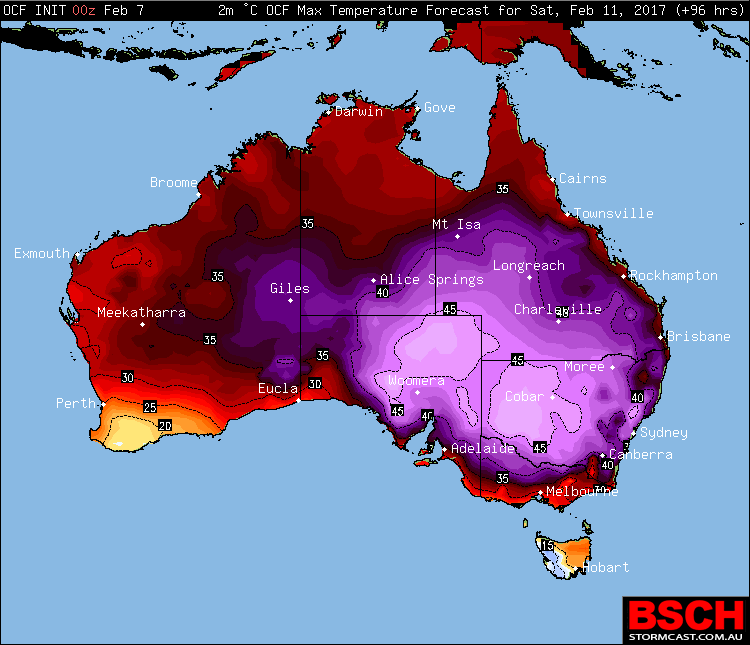
“Climate change is a clear and present reality that means warmer and wetter winters, hotter and drier summers, rising sea levels and more extreme weather” CABE Design Council
It’s almost impossible for any Australian to have lived through these last few months without experiencing the adverse effects of the extreme heat events that have occurred across the country – both regionally and in our urban centres.
Temperatures that have tripped all previous records of hottest month and/or day – at times pushing Bushfire Danger Ratings in many states to a ‘catastrophic’ level. Temperatures that are now represented on the evening news by the Bureau of Meteorology in pinks and purple – new colours that were added to our weather maps in 2013 because the existing extreme orange colour representing the 40-48 degrees Celsius range has now been overshot.
Whether you believe in global warming – or not – the evidence is pretty clear that these extreme weather conditions are occurring ever more frequently, and this needs to be addressed as a matter of course in our work as landscape architects. Regardless of your political ideology – whether you support fossil fuels or renewable energies – we as design custodians of the civic spaces, open landscape, parklands and public realm, have to ensure that our designs consider the impacts of climate change, and build in resilience against the reality of extreme weather conditions.
We need to be ahead of the curve – not waiting for design competitions to evoke thought and action in this space ‘after the fact’ and post recovery. We must bring it to the table when we are talking to clients, working with policy makers, and when we are debating the quality of our designs internally. It should be a conversation at every level.
As a nation, Australia has committed to reaching net zero carbon emissions by 2050 as part of the 2015 Paris Climate Change Agreement and this provides us with a significant opportunity across our cities, regional centres,farming lands and natural environments to make a meaningful contribution to the achievement of this goal. To this end,a team of AILA members from across the country has drafted a position statement titled “Adaptation to the change in climate – building resilience”available here which is being tabled to members now for feedback. I hope we can all review it and provide very valuable input to this message.
Angus Bruce
AILA National Vice President